Small jumping insects in nature provide endless inspiration for scientists.
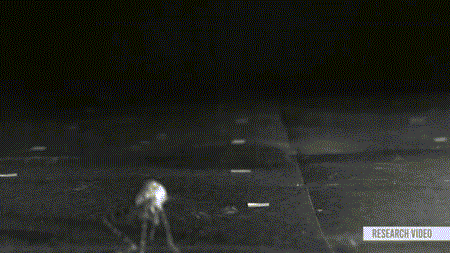
They can squeeze through the tiniest cracks, cling to narrow spaces, and survive in harsh environments: there is almost no place they cannot enter.
Take a look at this robot, about the size of a cricket but resembling a mosquito:
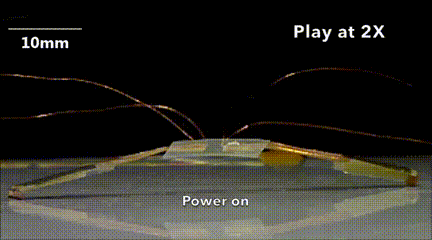
This is a miniature robot created by engineers at the University of Pittsburgh, inspired by insects. Its multifunctional movement and lightweight structure allow it to easily move across various surfaces and even jump on water.
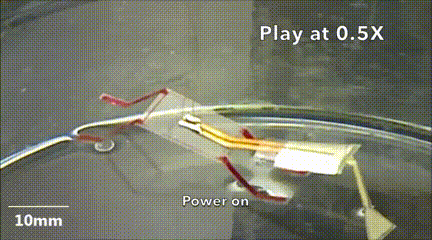
This miniature robot, like insects, can perform tasks in hard-to-reach spaces and desolate environments. It can be used for imaging, environmental assessment, and water sample collection in confined areas.
▍Electric Heating Changes Molecular Order
The movement of insects when jumping is somewhat like drawing a bow— first accumulating energy, then releasing it in an impulsive burst to propel forward. This method is more energy-efficient than crawling on surfaces.
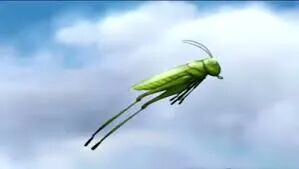
Professor M. Ravi Shankar from the University of Pittsburgh’s Industrial Engineering lab is responsible for this research. He stated, “Typically, the artificial muscles we use drive quite slowly. How can we use this artificial muscle to generate jumping motion instead of slow movement?”

The answer lies in the interaction between molecular order and geometry.
The researchers used liquid crystal polymer muscles, which have a highly ordered microstructure. When electrically heated, the internal molecules undergo a transition from nematic to isotropic order, resulting in reversible shape changes.
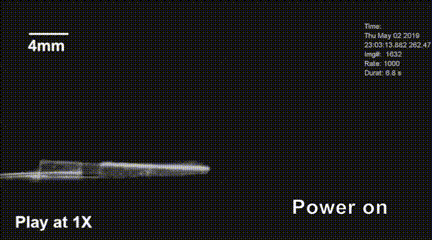
By combining liquid crystal polymer muscles with curved polyethylene terephthalate (PET) films, the polymer acts as the muscle, while the film acts as a spring. A miniature electrode is encapsulated to provide Joule heating, requiring less than a few volts to activate, and it automatically resets when the power is turned off.
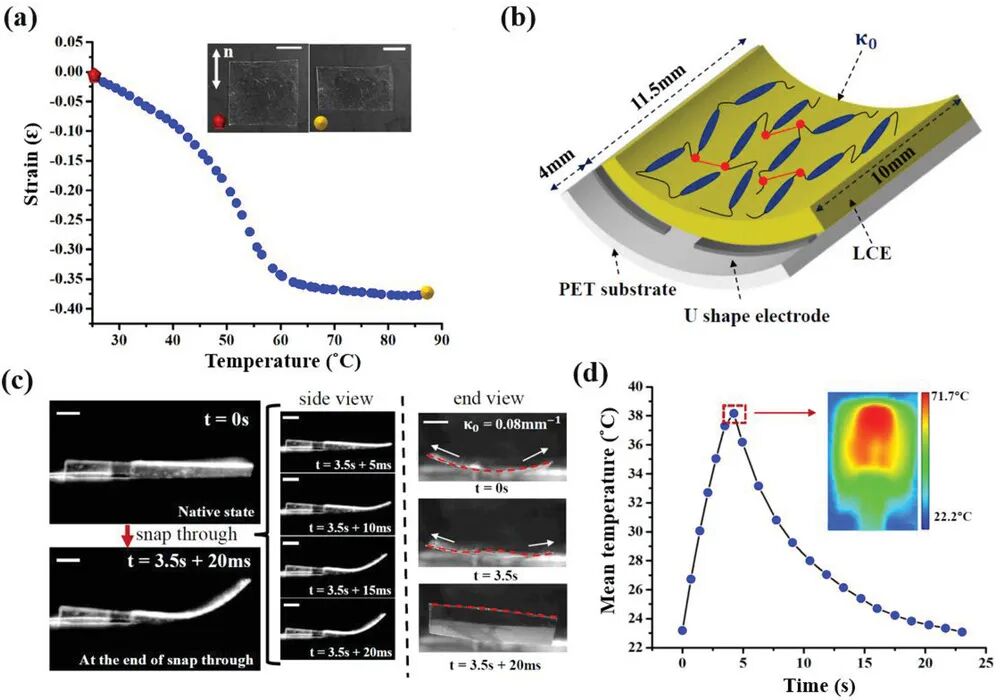
“The curved composite shape of the polymer muscle allows it to generate energy when powered. The arrangement of molecules in the muscle draws inspiration from nature, and their combined drive builds energy into the structure,” said Dr. Mohsen Tabrizi, a co-author of the study. “This is accomplished using no more than a few volts of electricity.”
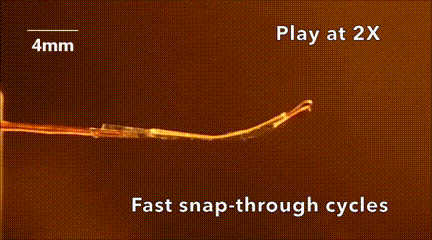
▍Amphibious Miniature Robots
This method can be used to create miniature robots with different structures and purposes:
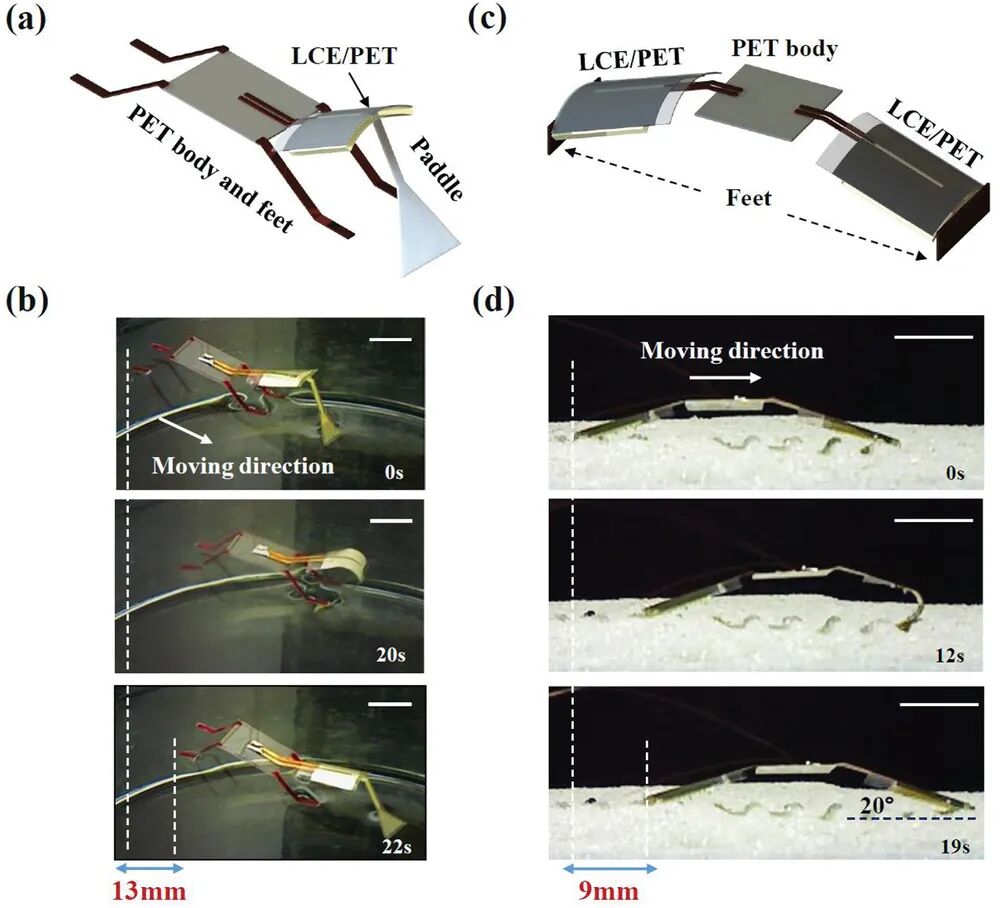
For example, this water fly weighs only 120 milligrams and can gently float on the water’s surface. Its front legs can be actuated quickly, and when heated, the robot inserts its legs into the water, breaking the surface tension to provide forward propulsion.
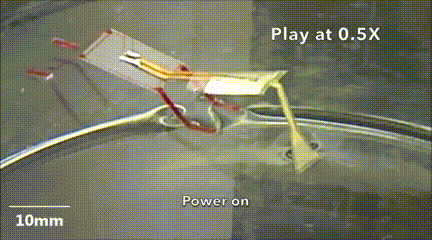
The researchers also created a jumping miniature robot, about the size of a cricket, which can move through gravel by actuating its front and hind legs:
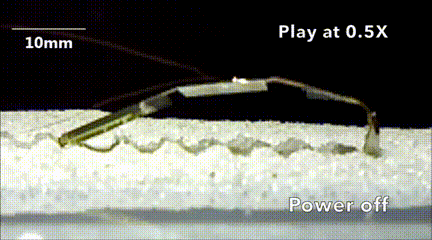
This research was published in the journal Advanced Materials Technologies, titled “Molecularly Directed, Geometrically Latched, Impulsive Actuation Powers Sub-Gram Scale Motility,” co-authored by Junfeng Gao, Arul Clement, Mohsen Tabrizi, and M. Ravi Shankar.
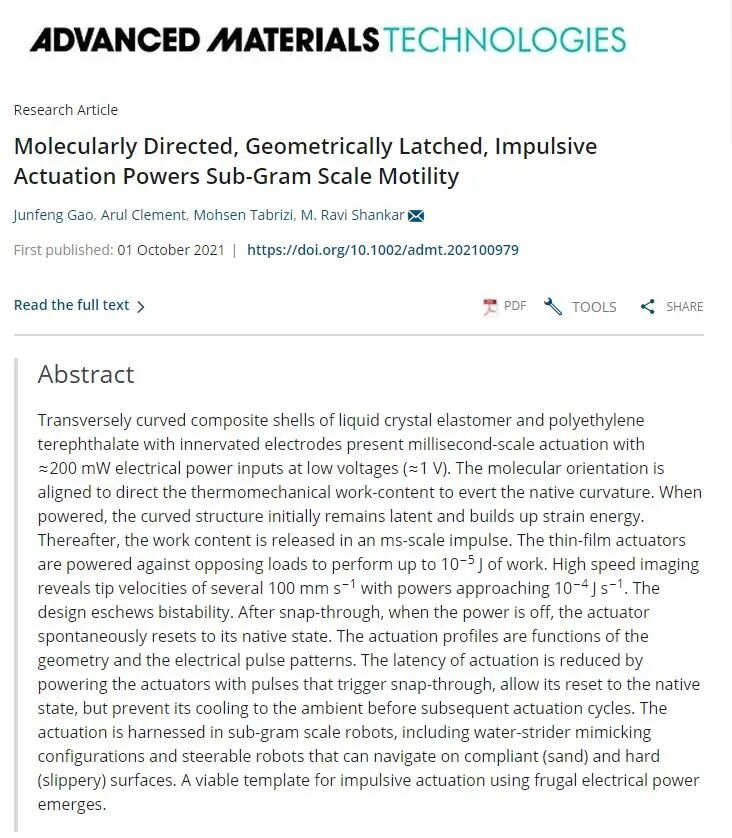
“These robots can be used to enter confined areas for imaging or environmental assessment, collect water samples, or conduct structural assessments,” said Junfeng Gao, who led this work as a PhD student in the Swanson School of Engineering’s Industrial Engineering program. “They can go anywhere.”
Original paper:
https://onlinelibrary.wiley.com/doi/10.1002/admt.202100979
——————-END——————-


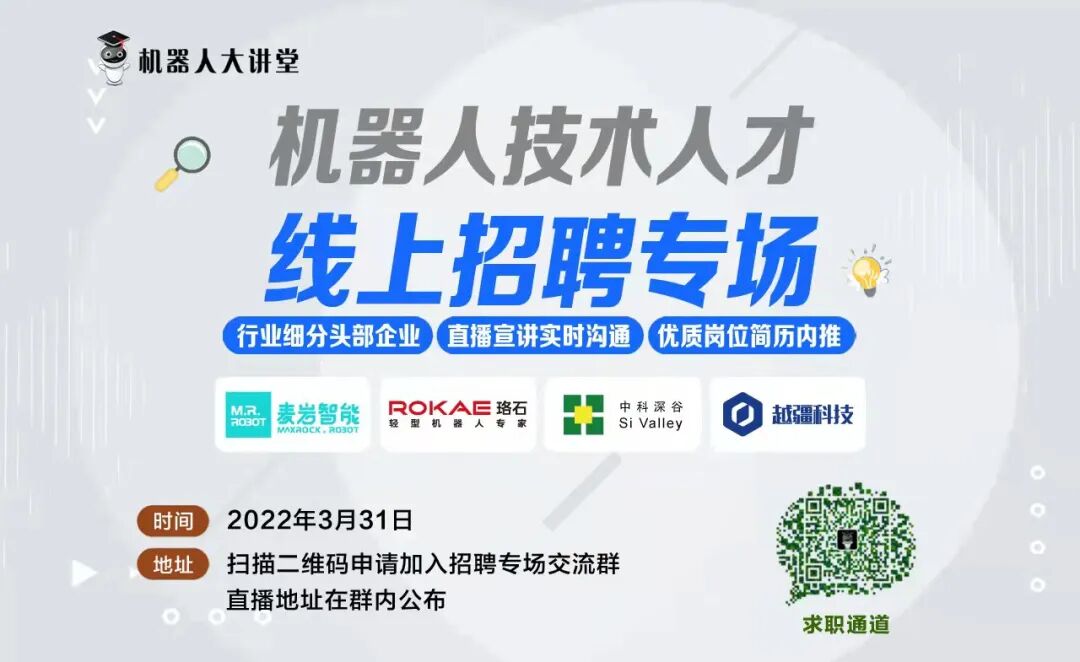
More Exciting Content
*Can the robot middleware + SDR open new doors in the special robot field in bulk?
*Luo Stone Robotics debuted at Japan 2022 iREX, accelerating global layout.
*Financing Monthly Report | Summary of financing events in China’s robotics industry in February.
*Securing hundreds of millions in Series C financing! Elite is building a platform-level collaborative robot.
*In the hundred billion market of robotics, how is Qinglang Intelligent leading globally with “zero distance to customers”?
*Jieka Robotics showcased at the 2022 Japan International Robot Exhibition.
*Multiple companies are crossing boundaries, starting the second half of competition in the service robot industry, with the digital economy becoming a core proposition.
*Luo Stone Robotics is the “winning formula” for upgrading intelligent manufacturing in the automotive industry.
*Vision + AI + reasoning, NVIDIA’s research opens new possibilities for robots to enter complex environments.
*Massive resources and shared benefits, the automated data sharing co-creation platform “Epoch” is officially launched!
*Financing Monthly Report | Summary of financing events in China’s robotics industry in January.
*A teaching tool for robotics—recommending a mobile grasping teaching robot.
*After well-known companies entered the quadruped robot market, why can Blue Alpha’s robotic dog still stand out?
*In a hot track with many players, how do delivery robot companies seize the opportunity?
*The top ten scientific advances in China for 2021 have been released! Mars exploration, self-powered soft robots, etc. are included.
*CPPCC member Xu Lijin: Suggesting increased efforts on core technologies such as AI and intelligent robots.
*Technology empowers smart hospitals, Candela Intelligent Technology completed upgrades for 16 hospitals in Yangzhou in just 30 days.
*Zhejiang Laboratory’s 2022 Spring Campus Recruitment has officially started.
*Covering multiple fields including industry, services, and education, seven cases showcase innovative practices of collaborative robots.
*In flexible automotive production lines, there are many hidden technologies.
*Behind a single order of ten thousand units, the health sector is rising and is expected to support industrial market growth.
Join the Community
Welcome to join the 【Robot Lecture Hall】 reader discussion group, to discuss topics related to robotics and share cutting-edge technology and industry dynamics.
Professional discussion groups on educational robots, medical robots, legged robots, industrial robots, service robots, special robots, drones, soft robots, etc. are recruiting. Follow the Robot Lecture Hall public account and send ” Discussion Group ” to get the joining method!
Recruiting Authors
The Robot Lecture Hall is recruiting 【part-time content creators】. If you are interested in writing articles on robotics 【technology】 or 【industry】 topics, please send your resume and original works to the email: [email protected]
We have no requirements for profession or location, and we welcome friends to join!


Feeling tired? Click “Looking” to support us!